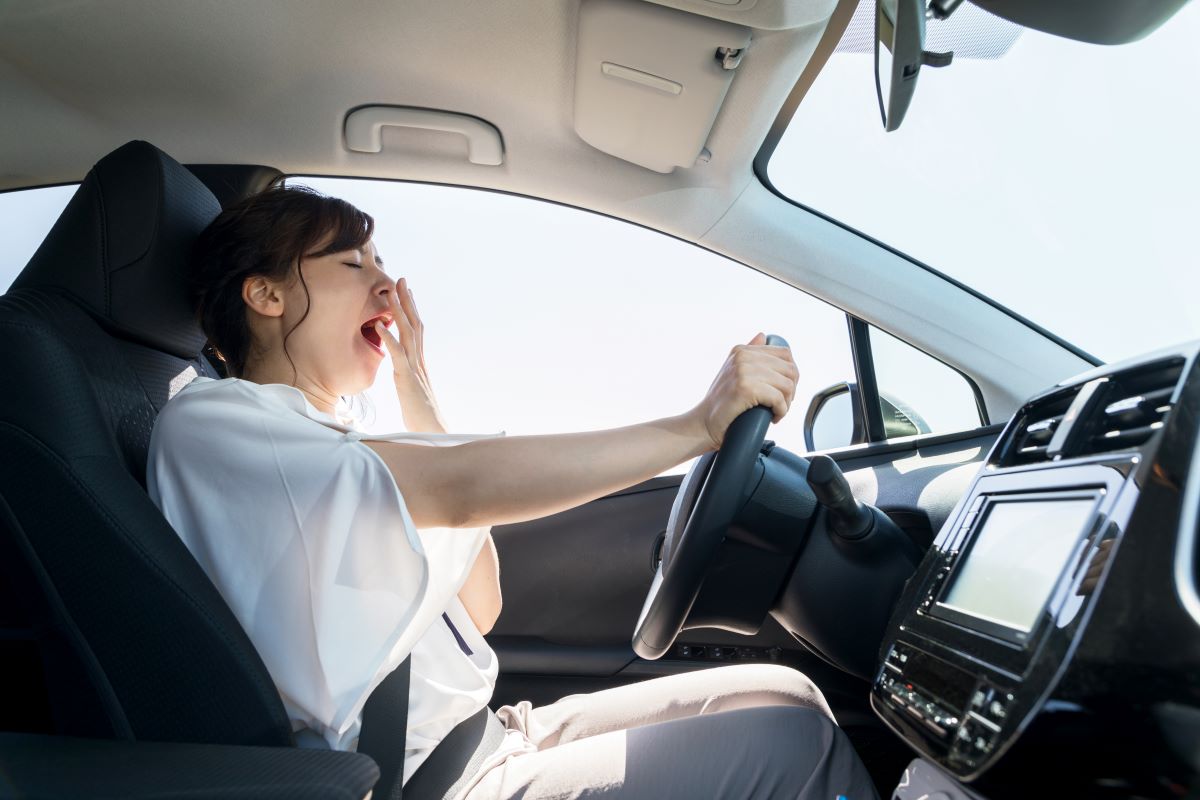Your Questions — 6 minutes
How to recognize and prevent drowsy driving

Every year, according to the SAAQ, driver fatigue causes an average of 78 deaths and 8,532 injuries, accounting for 21% of fatal accidents in Quebec. Accidents usually occur in the middle of the afternoon or at night because of our internal clock. They are most often caused by a lack of sleep, a sleep disorder, alcohol or drug use, or the taking of prescription medications. Drowsiness at the wheel impairs your concentration.
Here is the list of symptoms identified by the SAAQ. Know how to recognize the signs of fatigue. Some are telltale signs and recognizing them can prevent you from putting yourself in danger:
- Frequent yawning
- Tingling in the eyes
- Difficulty keeping your eyes open
- Difficulty finding a comfortable position in your seat
- Difficulty concentrating and paying attention (e.g., missing a highway exit)
- Difficulty maintaining a steady speed and trajectory
- Slower reaction times (e.g., braking late)
- Memory loss (e.g., forgetting the last few kilometres travelled)
- Hallucinating with or without fog (e.g., imagining an animal on the road)
- No longer looking in the rear-view and side-view mirrors
Strategies such as lowering the window, turning up the radio or drinking coffee are not very effective in dealing with these symptoms. The only way to combat fatigue is to stop and rest! Do not hesitate to pull over in a safe place and take a nap, even if it is only for 15 minutes or so.
If you have sleep apnea or another sleep disorder, make sure your bouts of drowsiness are under control before getting behind the wheel. Until your condition has been stabilized with treatment, avoid driving alone.
How to avoid drowsiness
- Get enough sleep before taking a long trip.
- Plan to drive when your body is most alert (avoid driving between 1 p.m. and 3 p.m. and between 2 a.m. and 6 a.m.).
- Take breaks at least every two hours to relax and move around.
- Eat light and do not drink alcohol.
- If you have sleep apnea, wear your device every night and make sure to consult your health care professional if your drowsiness returns.
Pour du soutien professionnel, nous sommes là.
We provide services that can help your doctor diagnose sleep disorders and determine the appropriate treatment.
You have question about an equipment? Chat online or get a free teleconsultation with a respiratory therapist.







